Another possibility, using only commands from the "chemfig" package, where I used two "invisible arrows" to adjust the position of the "+"
\documentclass[11pt,a4paper,oneside]{scrartcl}
\usepackage{chemfig}
\begin{document}
\begin{figure}[htbp]
\centering
\schemestart
\chemfig{*6(-=(*6(-(=O)-NH-NH-(=O)-))-=(-NH_2)-=)}
\arrow{0}[,.1]\+
\chemfig{H_2O_2}
\arrow{-U>[][\chemfig{N_2}]}
\chemfig{*6(-=(-COO^{-})-(-COO^{-})=(-NH_2)-=)}
\arrow(.east--.west){0}[,.1]\+ Licht
\schemestop
\caption{Reaktion von Luminol zu 3-Aminophtalatdianion}
\end{figure}
\end{document}

Since the first molecule has branches above and below the rings, and the reaction product has branches just above, and knowing that the "chemfig" aligns the molecules by their "center of mass", a simple way to adjust the position of the resulting molecule of the reaction is by placing an "invisible bond" (-[6,,,,draw=none) at the bottom of this molecule.
\documentclass[11pt,a4paper,oneside]{scrartcl}
\usepackage{chemfig}
\begin{document}
\begin{figure}[htbp]
\centering
\schemestart
\chemfig{*6(-=(*6(-(=O)-NH-NH-(=O)-))-=(-NH_2)-=)}
\arrow{0}[,.1]\+
\chemfig{H_2O_2}
\arrow{-U>[][\chemfig{N_2}]}
\chemfig{*6(-(-[6,,,,,draw=none])=(-COO^{-})-(-COO^{-})=(-NH_2)-=)}
\arrow(.east--.west){0}[,.1]\+ Licht
\schemestop
\caption{Reaktion von Luminol zu 3-Aminophtalatdianion}
\end{figure}
\end{document}




